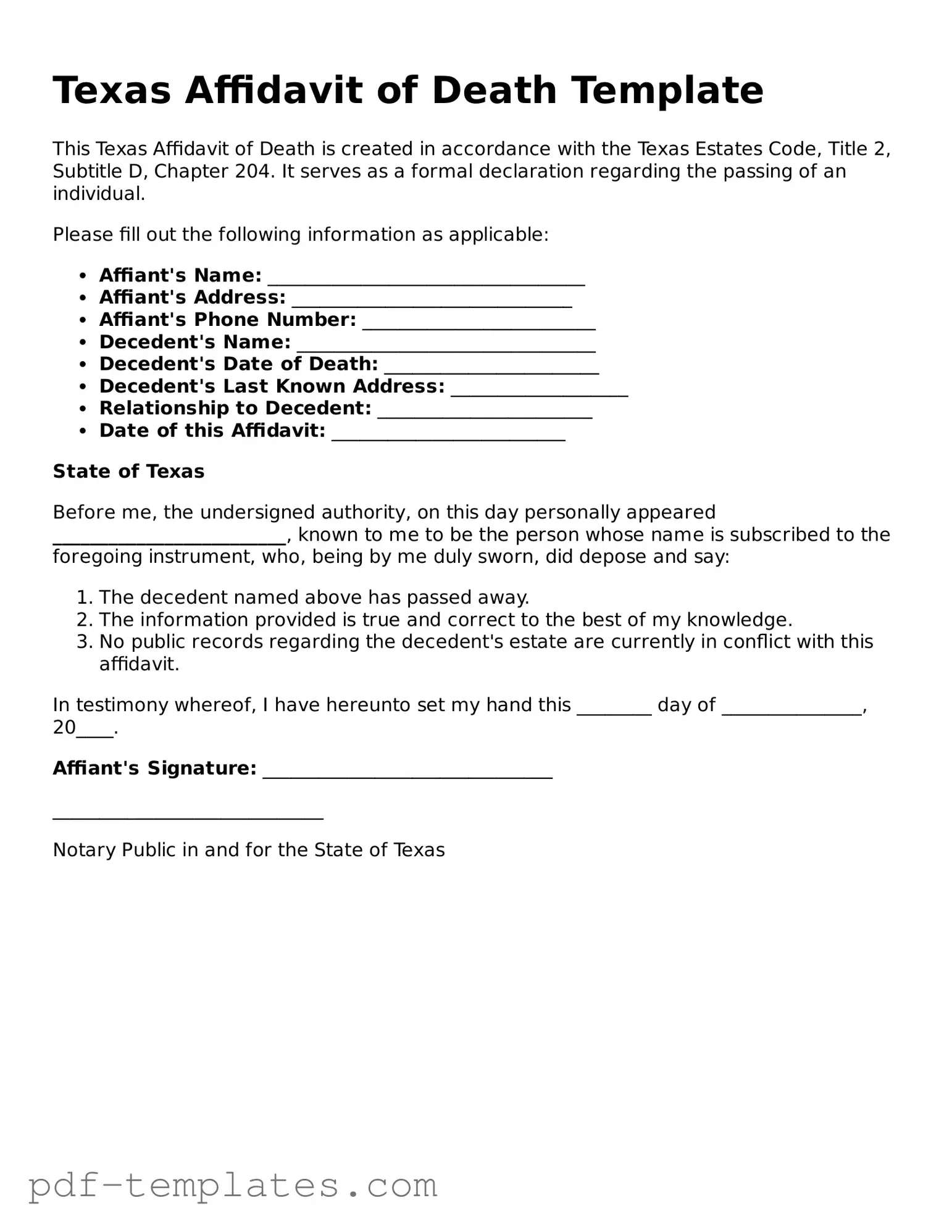When a loved one passes away, handling their affairs can feel overwhelming, especially when it comes to legal documentation. One important document that may be required in Texas is the Affidavit of Death form. This form serves as a formal declaration that a person has died, and it is often used to facilitate the transfer of property or assets, settle estates, or update records with financial institutions. The Affidavit of Death includes essential details such as the deceased’s full name, date of birth, date of death, and information about their last known residence. Additionally, it may require the signature of a witness or a notary public to validate the document. Understanding how to properly complete and file this form can ease the burden of navigating legal processes during a difficult time, ensuring that the deceased's wishes are honored and their estate is settled efficiently. This article will guide you through the key aspects of the Texas Affidavit of Death form, providing clarity on its purpose, necessary components, and the steps involved in its completion and submission.
